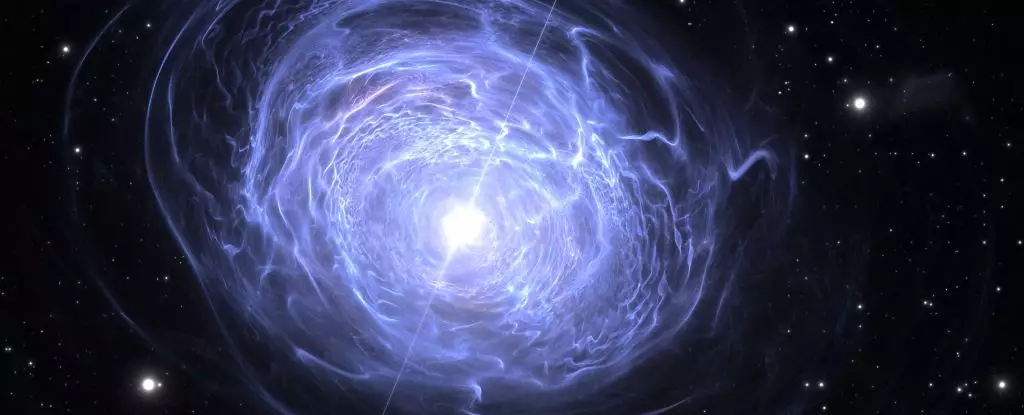The scientific community has recently been intrigued by a peculiar signal originating from the neutron star ASKAP J193505.1+214841.0, commonly known as ASKAP J1935+2148. Situated a vast 15,820 light-years away from Earth in the Milky Way’s plane, this celestial body stands out due to its erratic pulsation patterns that differ significantly from typical neutron star behavior.
Neutron stars are remnants of massive stars that have undergone supernova explosions, leaving behind ultra-dense cores. These neutron stars can manifest as pulsars, magnetars, or standard neutron stars, each exhibiting distinct characteristics based on their evolution process. However, ASKAP J193505.1+214841.0 defies categorization, showcasing pulsation modes that challenge existing models of neutron star evolution.
The Unconventional ASKAP J1935+2148
Unlike conventional neutron stars, ASKAP J1935+2148 displays irregular pulsation cycles, oscillating between intense brightness, complete silence, and diminished luminosity. This peculiar behavior was first detected serendipitously and further observed using advanced telescopes such as the Australian Square Kilometre Array Pathfinder (ASKAP) and the MeerKAT radio telescope in South Africa.
Recent discoveries of similar enigmatic objects emitting repetitive signals in the cosmos suggest a potential connection. Objects like GLEAM-X J162759.5-523504.3, GPM J1839-10, and GCRT J1745-3009 exhibit anomalous pulsation patterns, hinting at a possible evolutionary link. ASKAP J1935+2148, with its distinct pulsation modes, could represent a transitional phase between different neutron star states.
Implications for Astrophysics
The baffling nature of ASKAP J193505.1+214841.0 challenges scientists to reevaluate their understanding of neutron star evolution and magnetic processes. The possibility of a new class of magnetars emerging from these observations opens up exciting avenues for future research in astrophysics and could revolutionize our comprehension of stellar phenomena.
The discovery of ASKAP J193505.1+214841.0 and its unprecedented pulsation behavior signifies a significant milestone in astronomical research. By unraveling the mysteries surrounding this enigmatic neutron star and its counterparts, astronomers are poised to gain valuable insights into the complex nature of celestial objects and the evolution of magnetars. The cosmic riddle presented by ASKAP J1935+2148 beckons scientists to delve deeper into the vast unknown of the universe, expanding our knowledge and pushing the boundaries of astrophysical understanding.


Leave a Reply